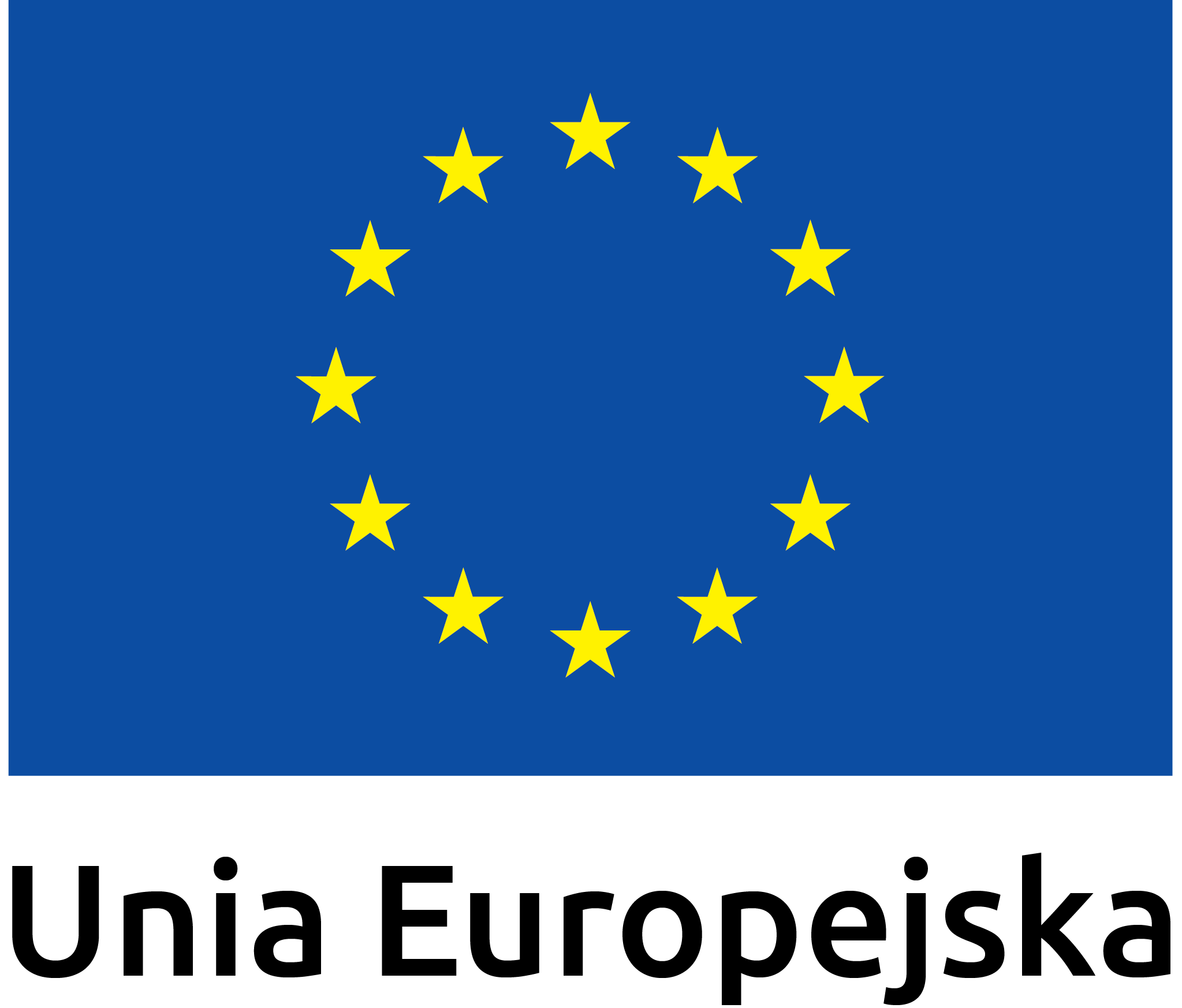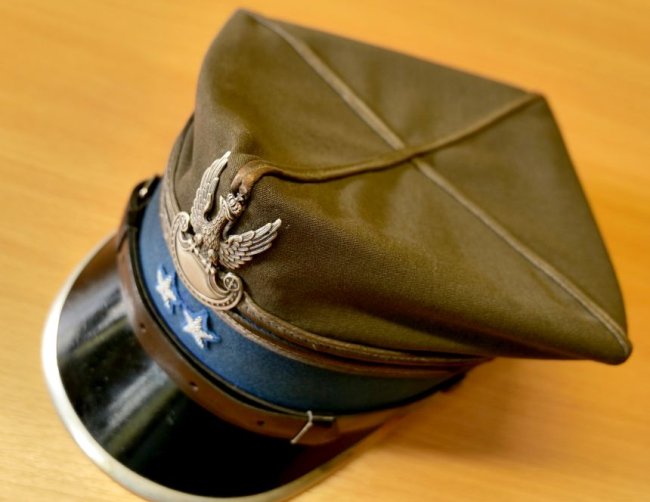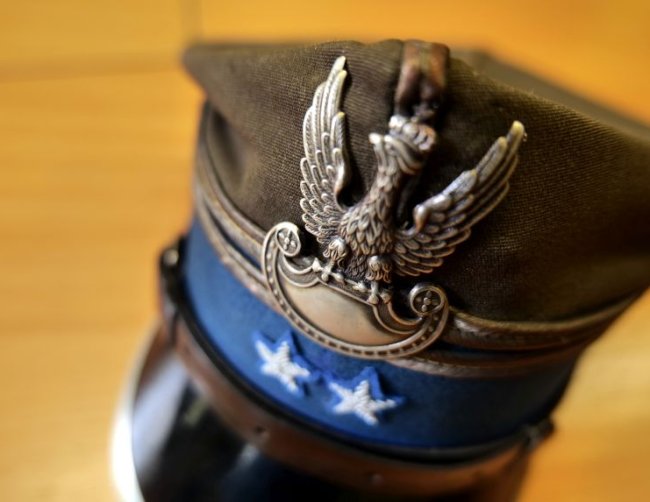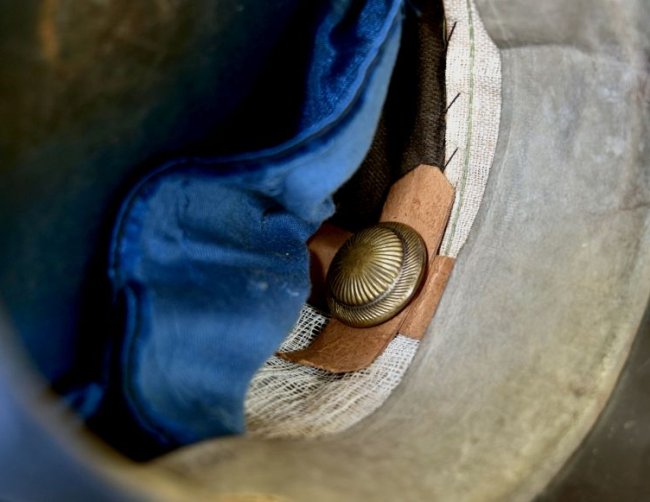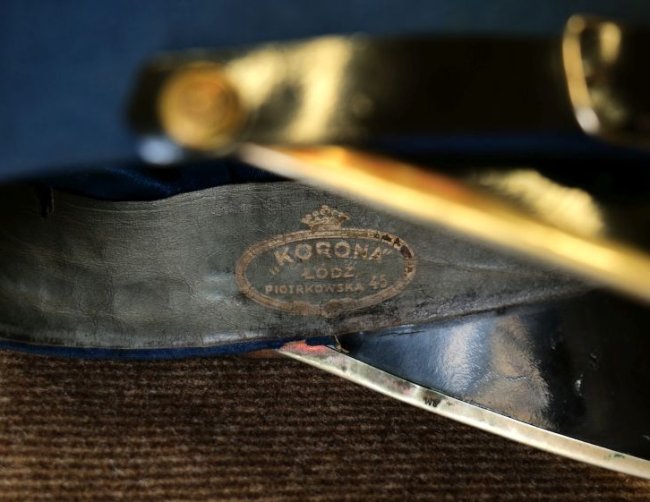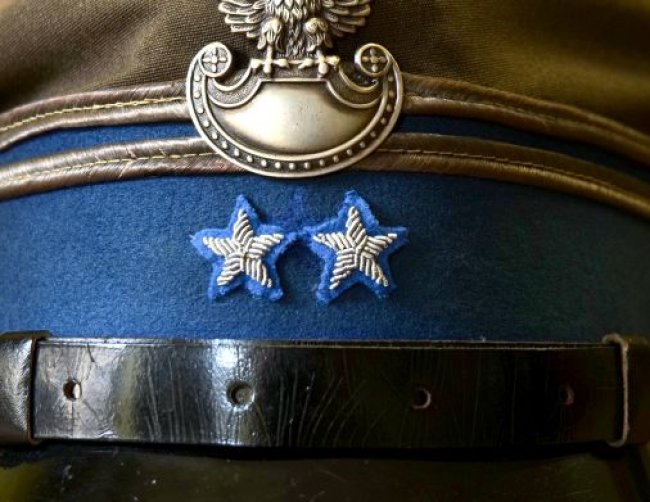Object
Lieutenant Colonel Stefan Kotlarski's garrison cap
Information
Inventory no
MNS-H/2802
Department
Historical and Archaeological Department
Technique
sewing, casting, oxidation
Copyright classification
https://pl.wikipedia.org/wiki/Domena_publiczna
Description
Stefan Kotlarski's rogatywka comes from the times when he was the commander of the 31st Regiment of Kaniowski Riflemen in Łódź (1928-1931), sweat. this is also evidenced by the manufacturer's logo: "Korona" Piotrkowska 45 Łódź located inside on a leather piece of material, the so-called sweat.
It is worth paying attention to the characteristic Polish military eagle wz. 19 made by the engraving company Skarnik & Fiszbein in Warsaw. The eagle of white oxidized metal resting on the Amazon shield is attached to the so-called rogatywka. a top. On the navy-blue rim of the rogatywka - showing the type of army - there are two silver braids belonging to senior officers and two stars embroidered with silver thread, the so-called a puddle, which Stefan Kotlarski received in 1945 when he was promoted to lieutenant colonel. This is how he recalls the event:
“Well, it is 1945 and I am reporting to the "Military Ministry of Internal Affairs" in Włochy near Warsaw - at the headquarters of the General Staff of the Polish Army High Command. The Polish and Russian military authorities were in office together in the "Ministry of the Interior" building. After checking in, I appeared before the Rehabilitation Board. The commission consisted of 5 officers. The general was in charge. I can't remember the names today. Major Malawski from Mszana Dolna, who also managed to break free from German captivity and return to the country, stood with me in front of the Commission. After interrogating us about the entire period of war and captivity, we were both rehabilitated for the captivity period and nominated to the rank of lieutenant colonels. It was solemn, the Rehabilitation Committee stood up, and the general congratulated us warmly on our posture during the war and on our nominations.
Bibliography:
Zdzisław Żygulski (jun.), Henryk Wielecki: Polish military uniform. Krakow: National Publishing Agency, 1988. ISBN 83-03-01483-8.
Stefan Kotlarski b. Born on August 16, 1891 in Jasło. He graduated from junior high school in Jasło, and studied law at the Jagiellonian University. In the years 1912 - 1914 he was a member of the Sokoli Teams of the Jasielski Camp - a paramilitary organization preparing cadres for the Polish army. In 1914 he was mobilized in Nowy Sącz to the 20th Infantry Regiment of the Austrian Army and with them he went through the entire World War I fighting on the fronts: Serbian, Russian, Romanian and Italian as Leutenant Commander of the heavy machine gun company. On the Italian front he was captured at the end of 1917 on the Isonzo. He applied to the Polish Army being created in France - Haller's Army - called the "Blue Army" as a lieutenant commander of a heavy machine gun company, he participated as part of the Polish Battalion in the victory parade at the Arc de Triomphe in Paris. In 1919, he returned to the country with the Haller Army to fight with his 4th Regiment of Haller Rifles on the fronts: south-eastern - relief of Lwów, south-western Silesia - Krakow - Upper Silesia, Pomeranian - occupying Pomerania and the coast, eastern in the Polish Bolshevik from Vilnius to Warsaw as commander of the Battalion of the 11th Pomeranian Division. After the war, he returned to Nowy Sącz in the rank of captain. And he served in the 1st Podhale Rifle Regiment and in Cieszyn as the battalion's major commander. He took part in the events of 1926 in General Galicy's group in the troops loyal to the government of Witos, he was then commander of the battalion and then commander of the 31st Regiment at Riflemen Kaniowskich in Łódź, then commander of PKU Łódź. Then in Nowy Sącz - already retired, he was active in "Sokole" and "choir Echo", and in 1939 he again took part in the September Campaign as the commander of the section of the front near Przemyśl and the last Polish commandant of the square in Nadwórna. He went to Hungary, where he was interned, and then, after the Germans entered, he was transported to a POW camp in Lunkenwalde near Berlin - a branch of Genzhagen. In April 1945 he returned to Nowy Sącz. Promoted to the rank of lieutenant colonel. He retired from the military and worked in the civil service until 1970. He died on March 21, 1973 in Nowy Sącz, where he was buried in the family tomb, bid farewell by the Society of the Sącz region.
